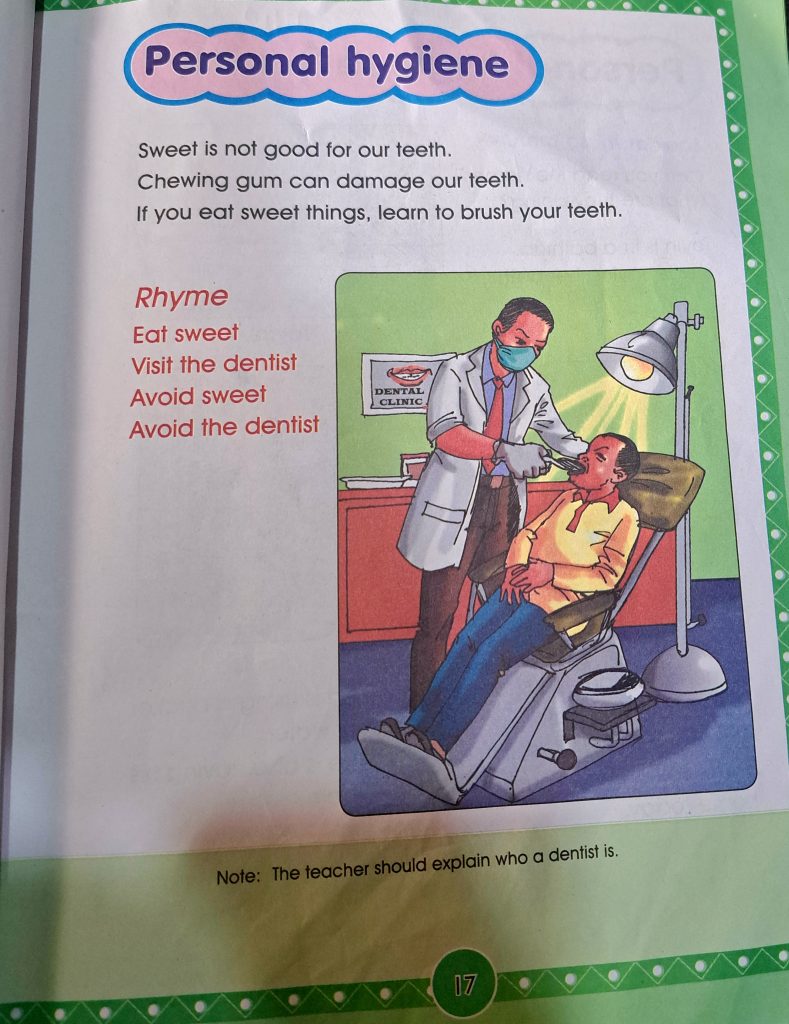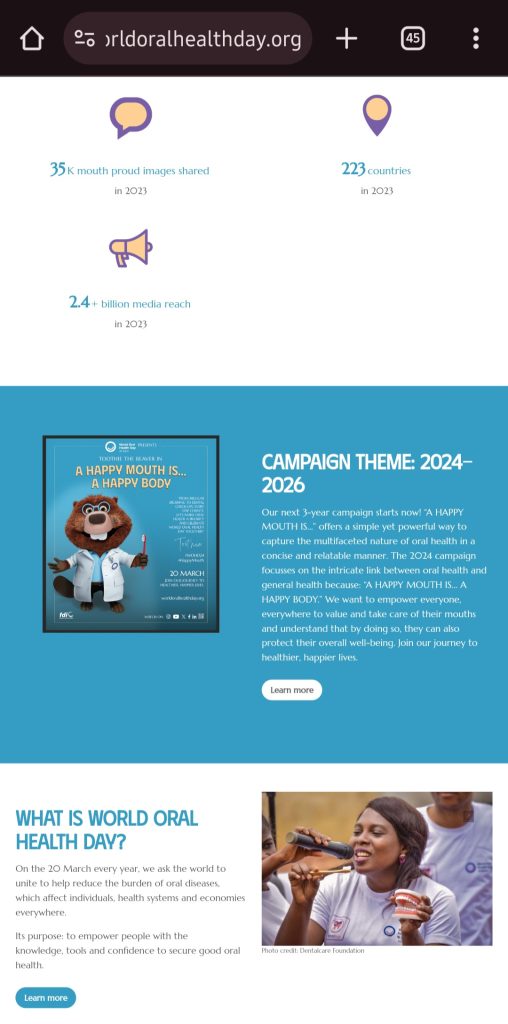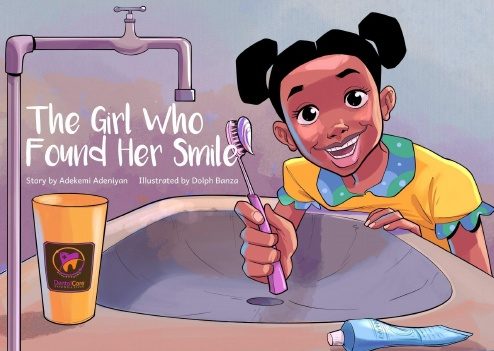
I sat on the couch next to my little 5 year old brother, ready to help him with reading and studying. He had his “EARLY Childhood Care Development Education: Social and Living Habits Step Three” book open. As he turned the pages, a rhyme caught my eye: “Eat sweet, visit the dentist, avoid sweets, avoid the dentist.”
I was taken aback by those seemingly innocent lines. At that moment, a stark realization struck me – some of these books are unknowingly imparting the wrong messages about oral health to our children. This four-line rhyme meant to warn about the dangers of too many sweets accidentally made dental visits seem like a bad thing. As I sat there, I couldn’t help but wonder how many other well-meaning rhymes and stories were perpetuating negative stereotypes about oral care. This needs to change.
In children’s books and educational materials, seemingly harmless rhymes and illustrations can unintentionally convey misleading messages about oral health. The rhyme “Eat sweet, visit the dentist, avoid sweet avoid the dentist” is a prime example of this. While the intention may have been to discourage the consumption of sweets, the underlying message inadvertently promotes the avoidance of dental visits, which is counterproductive to promoting good oral health habits.
Dentists are not the problem; oral health diseases and the inequities surrounding access to care are the real issues we need to address. It is crucial that we teach children the importance of regular dental check-ups and instill positive attitudes towards seeking professional care from an early age.
The role of arts and creative expression in health education cannot be overstated. Illustrations and visuals can leave a lasting impression on young minds, and it is essential that they accurately depict dental clinics and professionals in a welcoming and non-threatening manner.
Negative messaging, such as the rhyme mentioned earlier, can have unintended consequences. By promoting the avoidance of dental visits, children may develop fear or apprehension towards seeking professional care, leading to delayed treatment and potentially more severe oral health issues in the future.
Instead, we should focus on creating positive narratives that emphasize the benefits of regular dental check-ups. Children should be taught that visiting the dentist is a normal and essential part of maintaining good oral health, just like brushing and flossing. By portraying dental professionals as friendly and knowledgeable individuals who are there to help, we can alleviate any anxieties and foster a positive attitude towards seeking care.
Rhymes and stories have been a powerful tool for imparting knowledge and values to children for generations. They captivate young minds, making learning enjoyable and memorable. However, the messages conveyed through these mediums must be carefully crafted to ensure that they align with evidence-based best practices and promote positive behaviors.
In the realm of oral health education, rhymes and stories can play a pivotal role in shaping children’s attitudes and habits from an early age. Well-crafted narratives can teach proper brushing and flossing techniques, the importance of regular dental visits, and the consequences of neglecting oral hygiene in an engaging and relatable manner.
It is important to acknowledge that for many communities, access to quality oral health care is limited due to various socioeconomic and geographical factors. These inequities can lead to poorer oral health outcomes and a perpetuation of negative perceptions towards seeking care.
Educational materials and narratives should not only promote positive oral health behaviors but also address these disparities. By incorporating stories and characters that reflect diverse backgrounds and experiences, we can raise awareness about the challenges faced by underserved populations and advocate for more inclusive and accessible oral health services.
Call to Action:
Oral health advocates and professionals must collaborate with educators, authors, and content creators to curate age-appropriate, culturally sensitive, and scientifically sound educational materials. We need to actively engage in the development process, ensuring that the messages, rhymes, and visuals promote positive oral health behaviors and encourage regular dental visits.
Furthermore, involving community stakeholders, such as parents, caregivers, and representatives from diverse cultural backgrounds, can help ensure that the materials are culturally sensitive and address the specific needs and concerns of the target population.
Oral health professionals can provide scientific expertise and guidance on best practices, ensuring that the information being conveyed is accurate and evidence-based. Educators can offer insights into age-appropriate languages and effective learning strategies. Authors and illustrators can bring creativity and storytelling skills to craft engaging narratives and visuals.
It takes collective effort to ensure that children are equipped with the knowledge, skills, and confidence to prioritize their oral health without fear or stigma.
It is time to move away from narratives that stigmatize or discourage seeking professional care. Instead, we must empower children and their families to prioritize oral health as an integral part of overall well-being, fostering a culture of prevention and early intervention.
Every child should grow up feeling confident about dental visits and keeping their mouth healthy. With the right stories, we can help raise a generation of kids who value their bright smiles.

As we are about celebrating World Oral Health Day on the 20th of March, let us remember that by taking action now, we can lay the foundation for a future where oral health disparities are addressed, and every child has access to quality care and accurate, culturally relevant information. Remember, a happy mouth is always a happy body.

